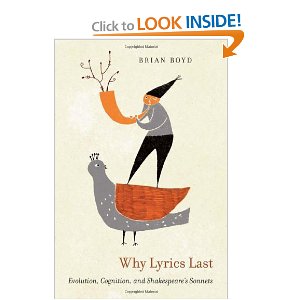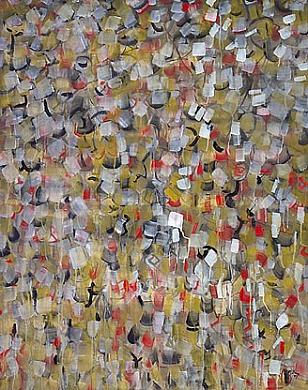Very impressed by this guy.
Listened to him being interviewed here:
An agricultural insurgency — Thursday 11 January 2018
This all sounds too good to be true. But I do trust him!
Looks like we can manage the anthropocene.
Very impressed by this guy.
Listened to him being interviewed here:
An agricultural insurgency — Thursday 11 January 2018
This all sounds too good to be true. But I do trust him!
Looks like we can manage the anthropocene.
Shared Realities: Participation Mystique and Beyond

Heard about this on Shrink Rap Radio where Dr Dave interviews the author/editor Mark Winborn. Worth listening to.
Download 427 Exploring The “Participation Mystique” with Jungian Analyst Mark Winborn
I had to get the book, it is a sort of meditation on the nature of the relational space. It focuses on therapy, but this would be so relevant for those of us who consider that the marriage is the therapy.
Loved this discussion:
 Bryan Boyd Interviewed by Kim Hill
Bryan Boyd Interviewed by Kim Hill
Here is the book:

I will read the book. But as I listened I was burning to join in on the discussion. I have since my days studying under Prof. Robert Bigelow in the late 60s at Canterbury had an understanding of “gene pools”. The concept makes sense of how some things might benefit the survival of a species even when individuals do not have more babies.
Brian Boyd touched on this lightly in the interview, I’ll be interested to see if he does this more fully in the book.
The point is this: if lyrical poetry (or anything else) is useful to the group then only a few need to have a gene for it, and even if they individually don’t have more babies, the group as a whole might survive and a neighbouring group who does not have that gene in their pool might not.
I’ve been thinking about this in relationship to the purpose of monogamy. It seems that it has a special place in healing wounds from childhood. But this typically does not happen till after the crucial childbearing years, in the second reflective half of life. I think of the powerful impact even one or two healing couples can have in a group. They can foster relationship education as well. They might influence psychological health, and more robust grandchildren.
PS
Bigelow’s book here: Amazon – The Dawn Warriors
I’ve been using Pocketcasts on the iPhone. The first one I’ve liked in all these years. The iTunes one never satisfied and the way I used to do it – was clumsy. But it worked and was essentially what I did on the Palm.
Now I wonder how much wabi sabi influenced the work of Jackson Pollock and those whom bought calligraphic ideas from japan like Mark Tobey

Autumn Field
1957
Mark Tobey
Born: Centerville, Wisconsin 1890
Died: Basel, Switzerland 1976
tempera on paper
sheet: 47 x 36 in. (119.4 x 91.5 cm)
Smithsonian American Art Museum
Gift of S.C. Johnson & Son, Inc.
1968.52.23
Not currently on view
http://artistsjournal.wordpress.com
I am always impressed by the enthusiasm this artists has for her simple abstract images. Inspiring.
It must be a lot of fun to play with paper and glue, and come up with these fairly small collages. (this one is 8″ x 8″)
I like this poem by David Dominguez.
And I found images of the portrait, and the watermelon paintings as well.
Wedding Portrait
Yesterday afternoon, I hung a framed print in the living room—a task that took two head-throbbing hours.It’s a wedding portrait that we love: Frida and Diego Rivera.I wonder how two people could consistently hurt each other,but still feel love so deeply as their bones turned into dust?Before Frida died, she painted a watermelon still life;before his death, Diego did too.I want to believe that those paintings were composedduring parallel moments because of their undying devotion.If I close my eyes, I can see melon wedges left likecenterpieces except for the sliceDiego put on the table’s corner—one piece of fruit pecked at by a dovethat passed through a window.I know that I won’t be building a bookshelf anytime soonand that the chances of me constructing a roll-top deskare as slim as me building an Adirondack chair that sits plumb,but I’m good with the spackle and putty knives in my tool belt.The knots in my back might not be thereif I had listened to her suggestions,and I could well have done without two hours of silenceover a few holes in the wall.But somehow, life has its ways of working things out.This afternoon, I shut the blinds,turned off the TV, lights, and phone,and massaged my wife’s feet to fight off a migraine—her second one this week despitethe prophylactics and pain killers that we store in the breadbox.For once, I’d like to experience what she feels:nausea, blindness, and pain that strikewhen the cranial vessels dilate,fill with blood, leak, and make the brain swell.Earlier, an MRI triggered the reaction as it mapped her headwith electrical current, gradient magnets, and radio waveshammering her floundering eyes.For now, we have our room, the bed frame, and the mattresswhere she lies as I knead her toes.Come nightfall, I hope that we’ll sit in the patio and watchthe breeze stirring the lemon, lime, and orange treesthat I planted along the back fence.On certain nights, the moon turns our lawninto green acrylic where we sip Syrah and mint teauntil all we know is the soundof our breathing among the whispering leaves.
I’ve been reading Kevin Kelly’s What Technology Wants. One of the central thesis of the book is that evolution is not only driven by adaptation. There are two other forces at work: structural forces, ie the laws of physics and contingency, luck. What if Beethoven did not have a piano?
I’ll post the picture that impressed me again:
This is a central idea (from the book):
The progression of inventions is in many ways the march toward forms dictated by physics and chemistry in a sequence determined by the rules of complexity. We might call this technology’s imperative.
What is stirring me to write this post is that I listened to a podcast today on Tech Nation, Moira Gunn interviewing Adrian Bejan – details
It is uncanny, and totally in line with the Kevin Kelly theory of what is inevitable that these tow come up with the same ideas. This is the time when we make a shift from classical darwinism, to incorporate something marx might have called dialectical materialism.
More about & by Adrian Bejan here:
TEDxBucharest – Adrian Bejan – YouTube
Interview with ‘Design in Nature’ Author Adrian Bejan, Part One …
His book on Amazon:

This theory, Bejan calls it “Constructal Law” governs everything. From his book:
The constructal law is revolutionary because it is a law of physics—and not just of biology, hydrology, geology, geophysics, or engineering. It governs any system, any time, anywhere, encompassing inanimate (rivers and lightning bolts), animate (trees, animals), and engineered (technology) phenomena, as well as the evolving flows of social constructs such as knowledge, language, and culture. All designs arise and evolve according to the same law.
What excites me is that the same law – or rules of complexity, a law about change really, governs the psyche too. I think Jung was onto this with archetypes. These structures are universal across cultures.
Saturday, 02 July 2022
I’m reading his “The Physics of Life — The Evolution of Everything”. Its at odds with what I’m thinking now. It’s not remotly dialectical. It’s all billiard balls. Nevermind. One day I may sort this out. Just annoying right now.


An experiment in automatic drawing
I put myself in a receptive state of mind and let my hand just move without attempting to direct it, Ouija-board style.
This is in the tradition … Mark Toby, Jackson Pollock, letting nature come through … nature’s handwriting.